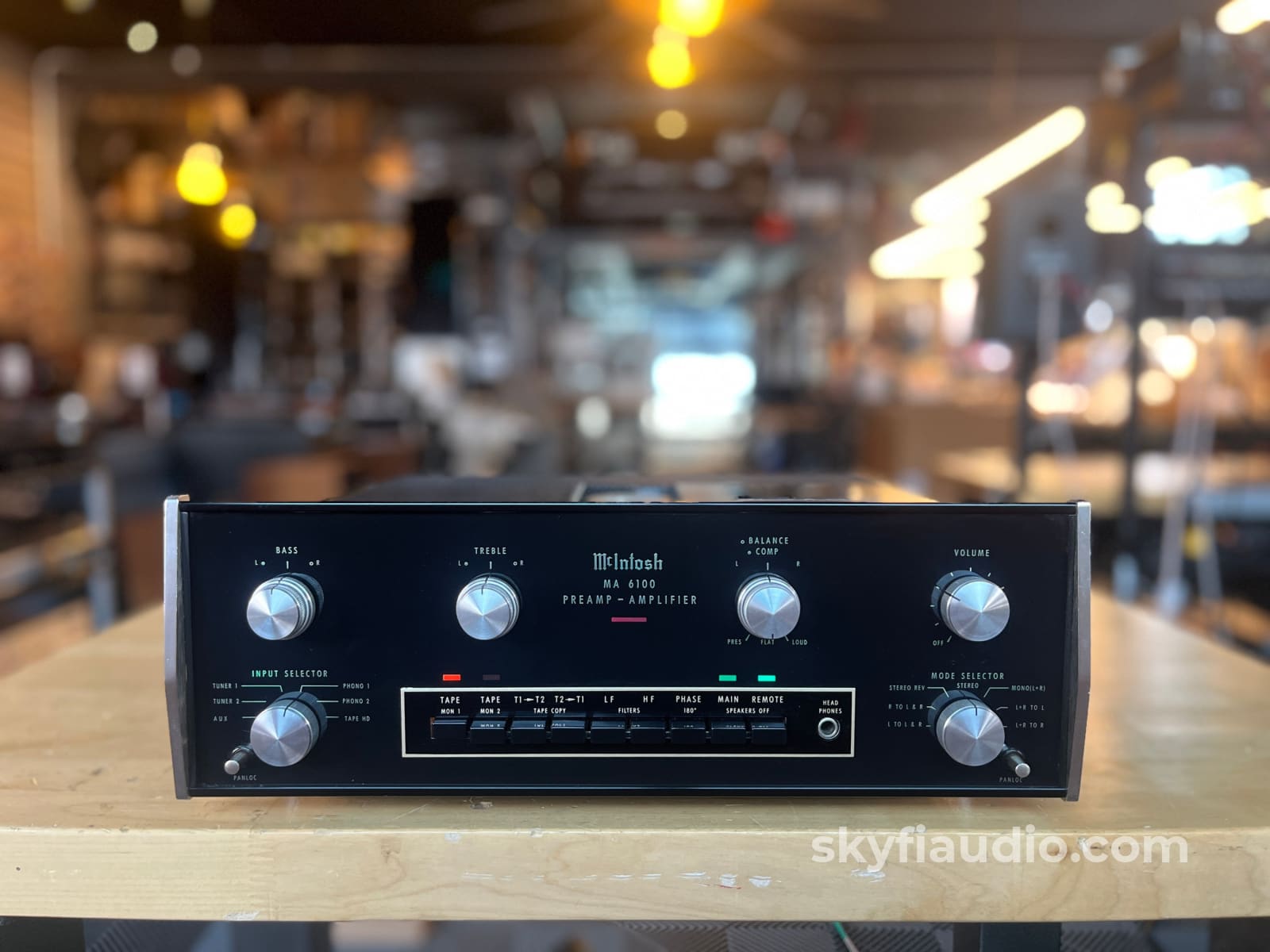
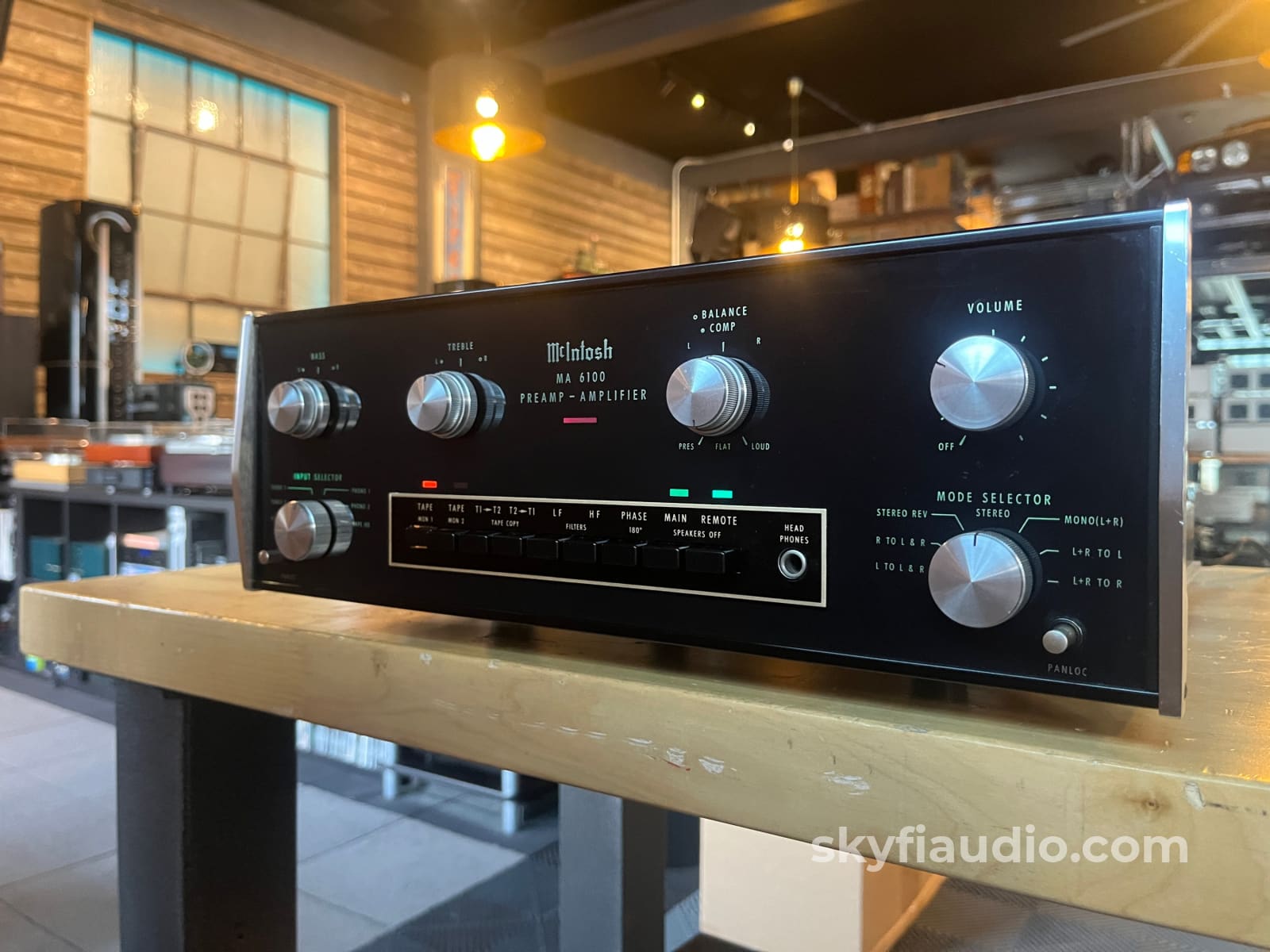
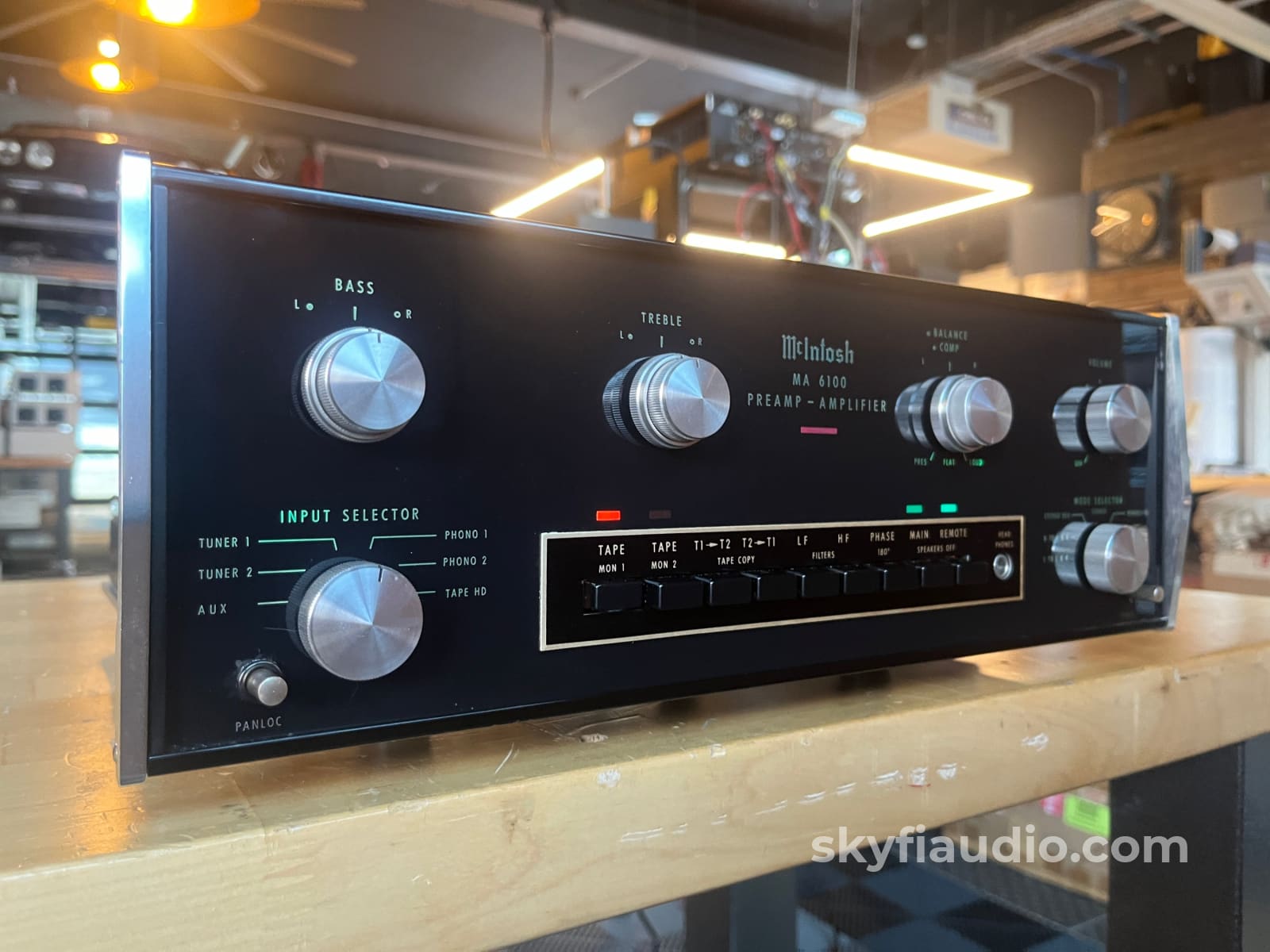
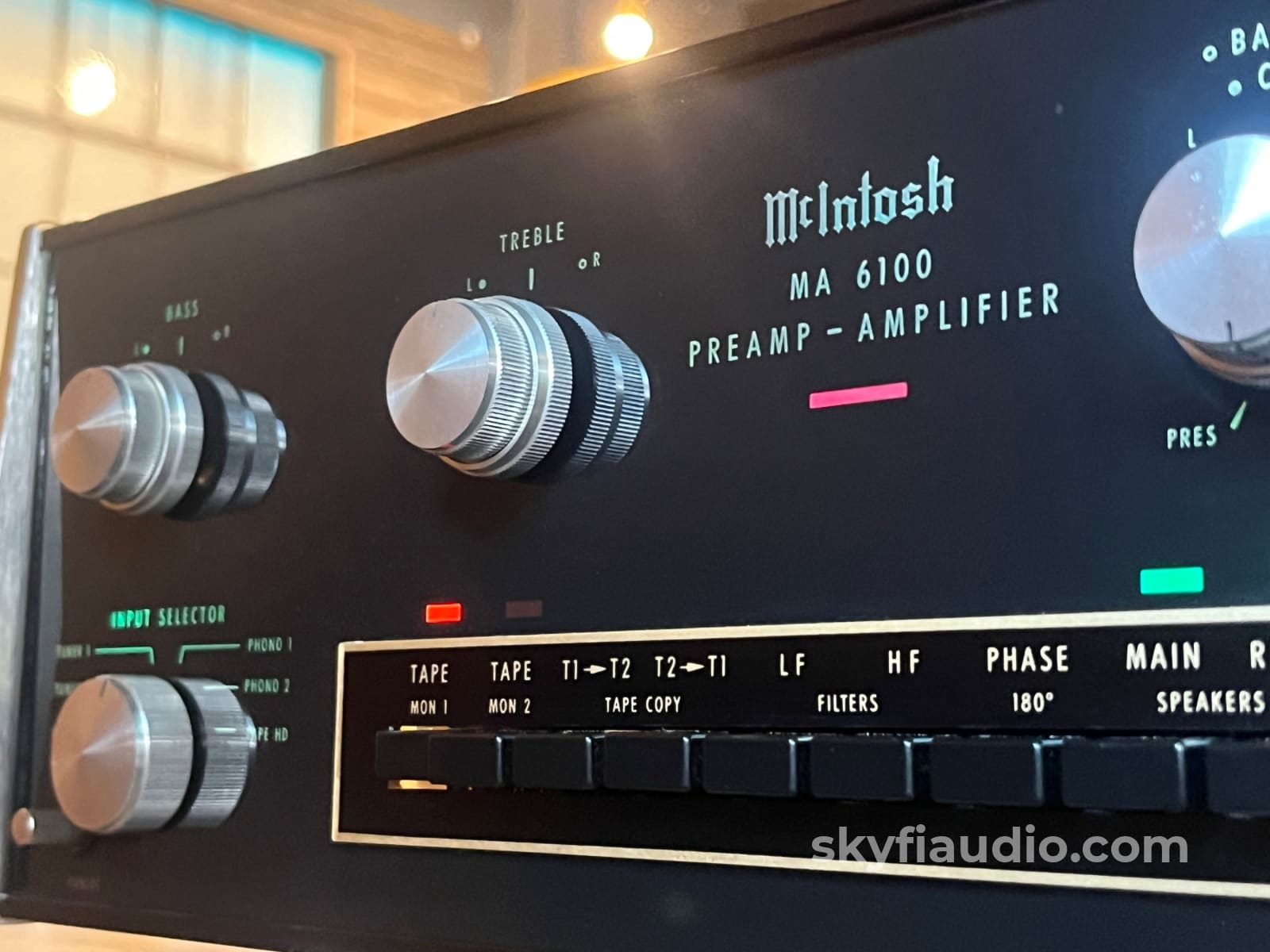

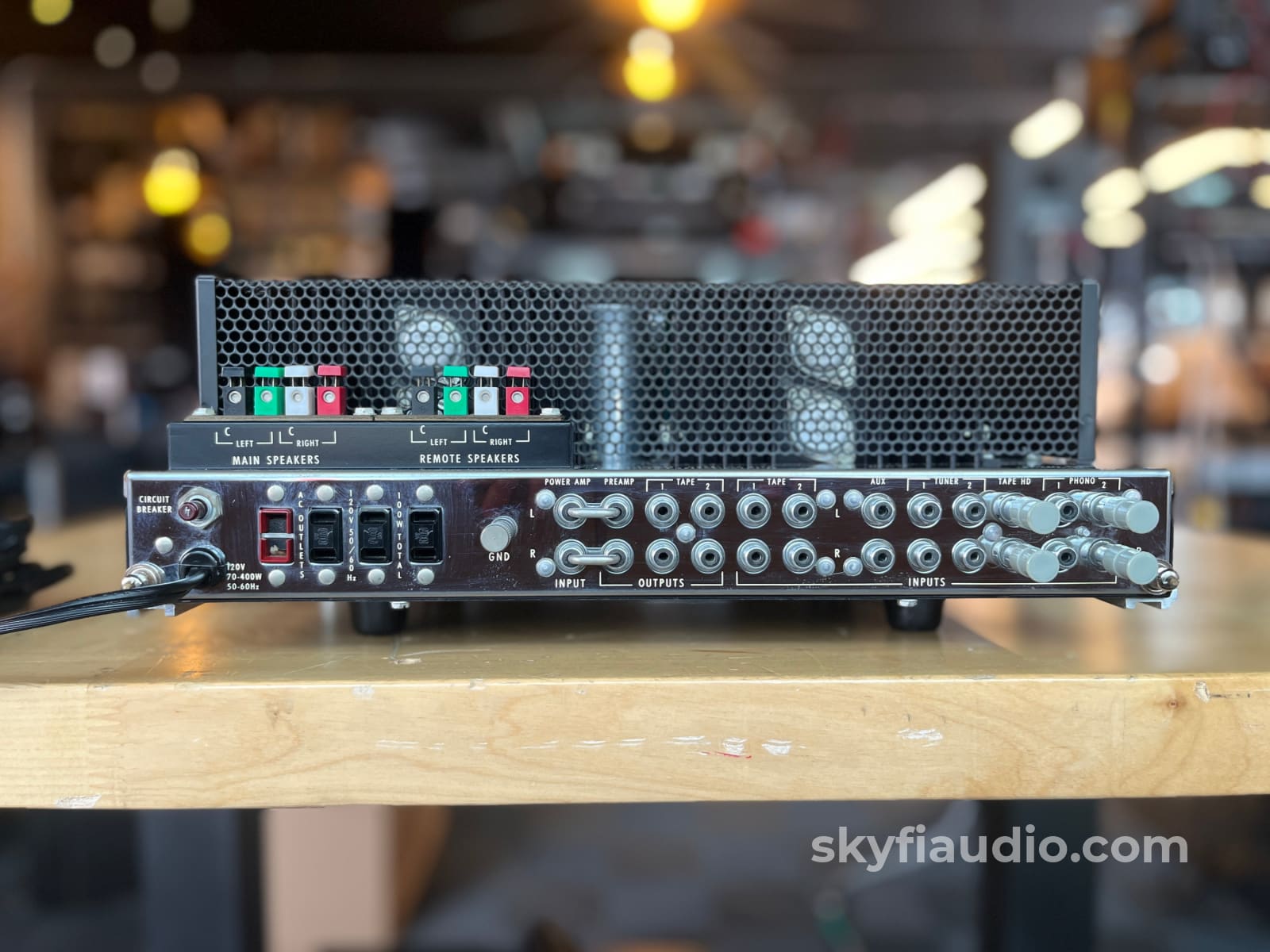
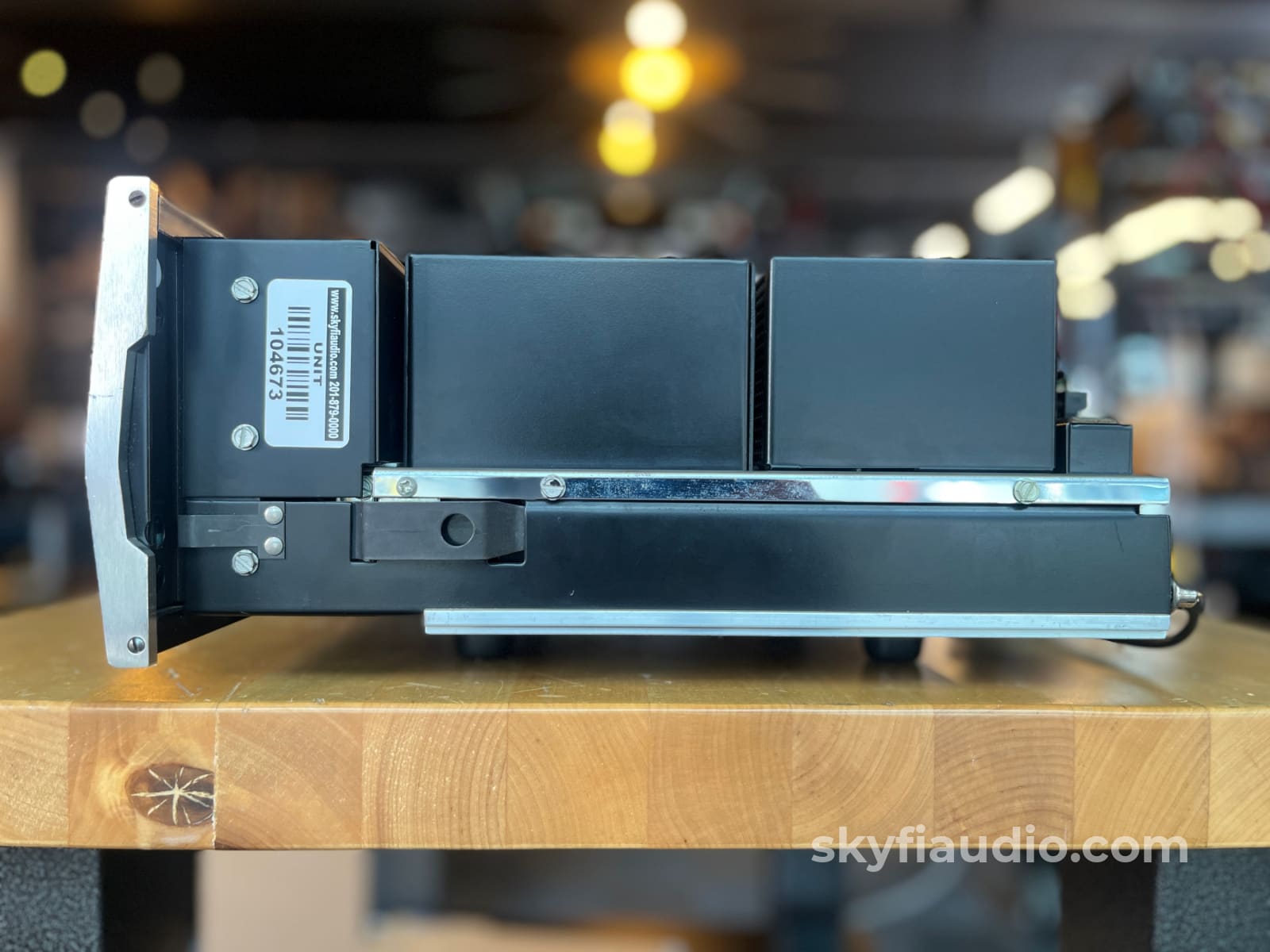
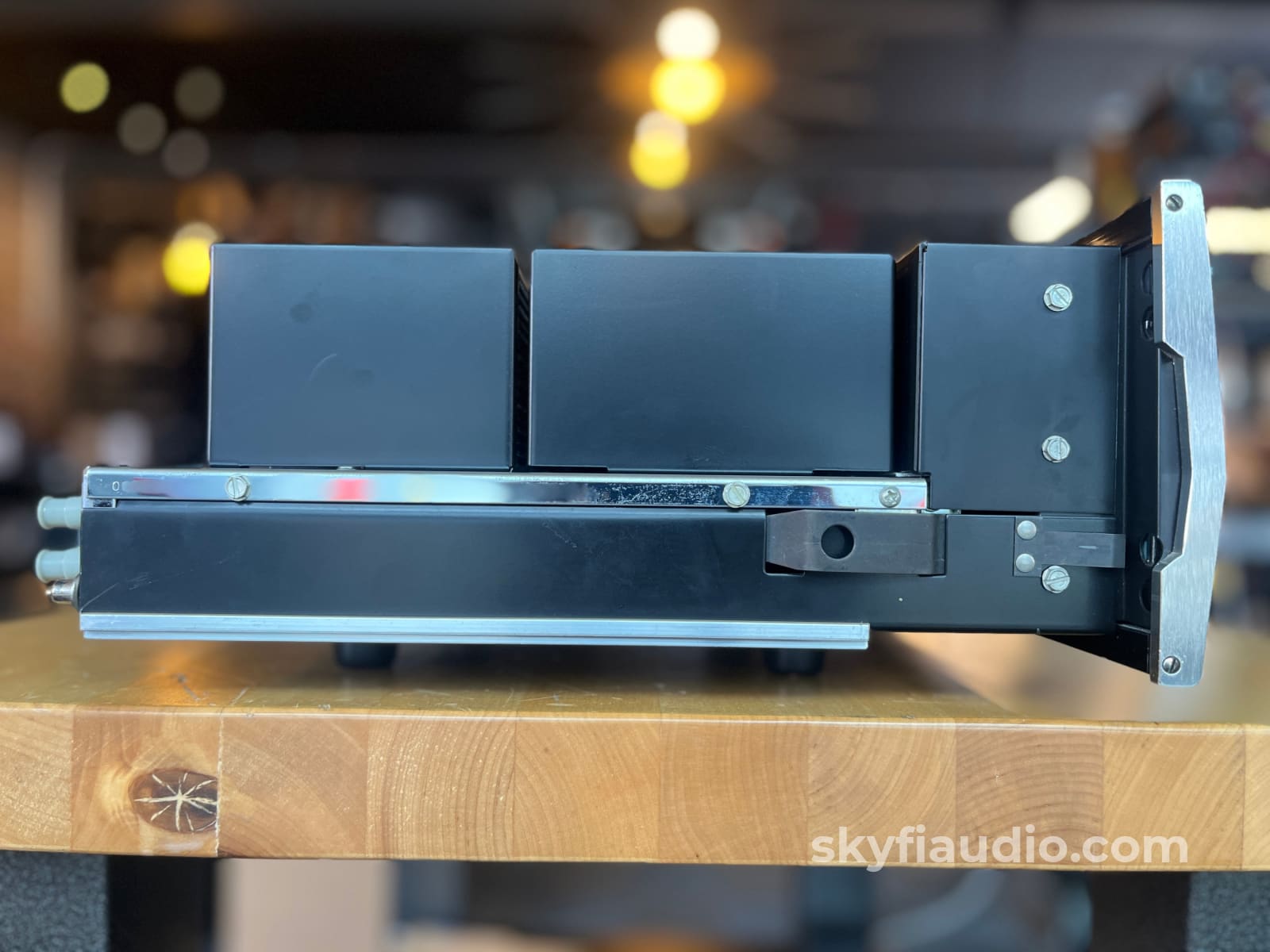
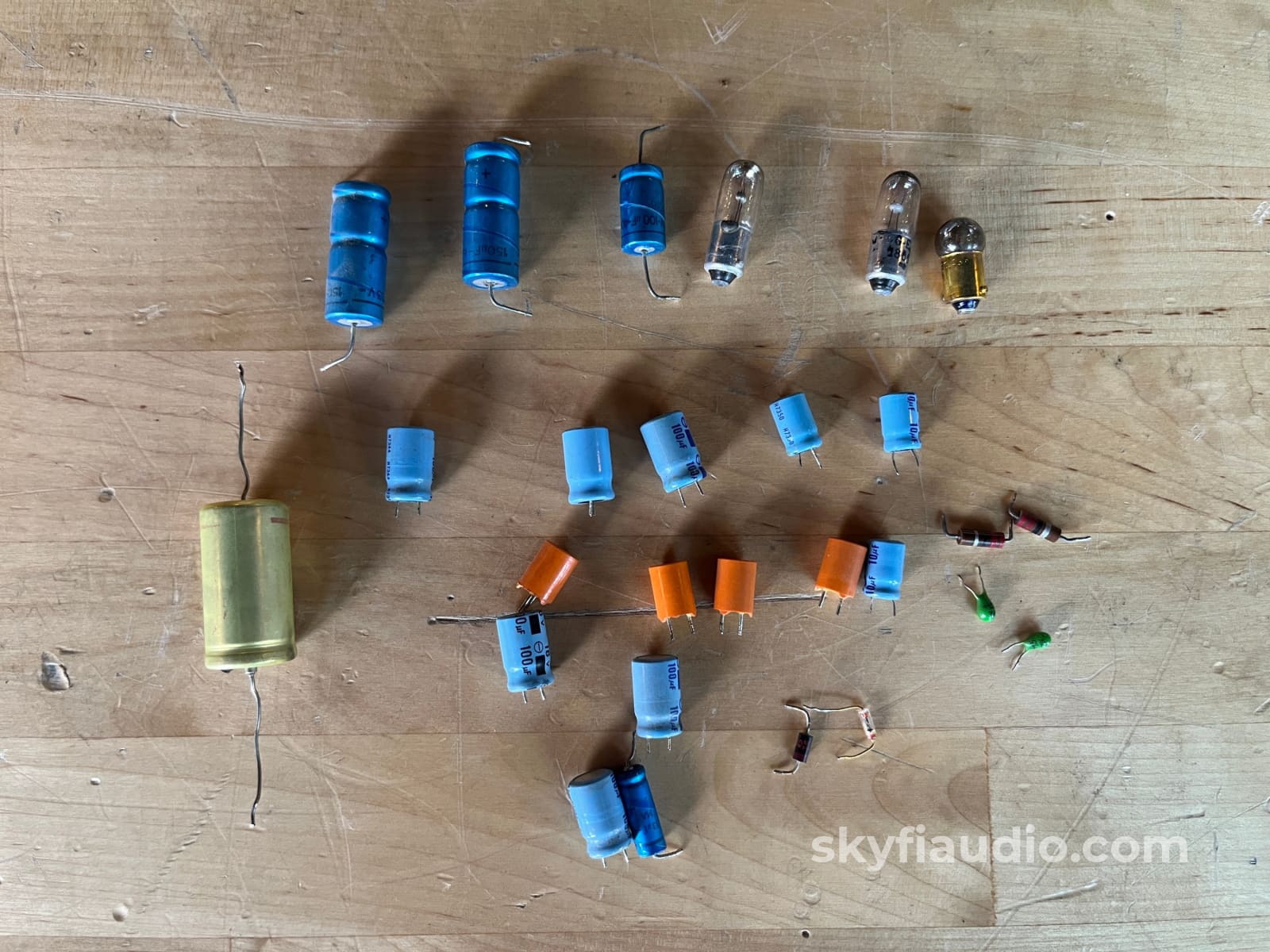
McIntosh MA6100 Vintage Integrated Amplifier- Serviced
Free Shipping on Most Electronics - Excludes Speakers and Items Requiring Freight - Contiguous U.S. Only
Pickup currently unavailable at SkyFi 479

McIntosh MA6100 Vintage Integrated Amplifier- Serviced
SkyFi 479
479 South Broad Street
Glen Rock NJ 07452
United States
General:
While this may look like a McIntosh C28 or similar preamplifier from this era, don't be fooled.
This is a full-featured integrated amplifier from the 1970's capable of driving most speakers. It can provide 70W per side with clean, stable, and signature sweet McIntosh power. Dual phono inputs are a nice touch.
It's also a great match to the classic McIntosh MR71 tuner to form essentially a very capable receiver.
SkyFi Cosmetic Notes:
This amplifier's chrome is in very good condition. Only minor blemishes are present on the faceplate in the form of light bubbling near the panloc buttons and a small scratch on the top trim.
SkyFi Technical Notes:
This amplifier was serviced in house at SkyFi. We replaced the electrolytic capacitors on all of the boards (this included the output driver cards), the regulated power supply, and preamp circuits. The lamps were checked and replaced as needed. All controls were cleaned, and the tone control adjustments were set for ideal frequency response.
We commonly see volume controls in this era of Mac that have less than ideal channel balance. This means that the amplitude of the left and right channels may not exactly match for the entire rotation of the control. We found that this affect is present in this control in about the 60-80% range of rotation. The affect was not readily perceptible in our listening tests.
Brand Background:
McIntosh Laboratory is an American manufacturer of handcrafted high-end audio equipment based in Binghamton, New York. The company was founded in 1949 by Frank McIntosh. The company designs and produces audio amplifiers, stereo tuners and other consumer electronics products.
Ownership:
Second Owner
Connections:
RCA inputs and outputs, Captive power cord, Speaker spring terminals, three AC Power outputs
General Sound:
Smooth, uncolored, undistorted natural and clean
Cosmetic Condition:
8/10 = Very Good. Excellent front faceplate, one minor flaw on chassis side or top. See our detailed rating description here.
Working Condition:
Working perfectly and tested in our lab and listening room.
Included:
Exactly as pictured and described above.
Packing:
Original Manufacturers Packing
Specs:
Power output: 70 watts per channel into 8Ω (stereo)
Frequency response: 20Hz to 20kHz
Total harmonic distortion: 0.2%
Damping factor: 50
Input sensitivity: 2.5mV (MM), 300mV (line)
Signal to noise ratio: 76dB (MM), 90dB (line)
Output: 300mV (line)
Speaker load impedance: 4Ω to 16Ω
Semiconductors: 36 x transistors, 22 x diodes, 2 x TRIAC
Dimensions:
16" W x 5 7/8" H x 13" D
Weight:
34 lbs.
Approximate Age:
1972
Link to Manual:
Click Here
Recommended Cables:
Kimber Kable - RCA Interconnects - Better
Kimber Kable - RCA Interconnects - Best
Kimber Kable - Phono Interconnects
Kimber Kable - Speaker Cables - Better
Kimber Summit Series Monocle XL Speaker Cables (PAIR) - Best
Testing Process:
We start with a visual inspection of all internal components to make sure that there are no signs of heat stress or damage. Capacitors are checked for telltale signs of predictive failure including bulging, shrunken wrappers, or physical leakage. We also inspect the PCBs for discoloration from resistors or transistors that may have been running hot. On vintage units we often spot check select capacitors for value and ESR.
If the device has the ability to decouple the preamplifier from the power amplifier, we remove the jumpers and independently test each section. If the device cannot be decoupled, we assess the electronic condition of the piece by analyzing the speaker level output only.
We start by connecting the "Pre-Out" jacks of the integrated to a Sencore PA81 Power Analyzer which simulates real world loading conditions and gives us an oscilloscope interface. The first order of business is checking that the volume control works smoothly throughout its entire range with acceptable channel balance. This is accomplished by feeding a 1 KHz sine wave into one of the preamp’s line level inputs while monitoring the preamp’s output on an oscilloscope.
We then switch to a 1 KHz square wave to test the tone controls, loudness function, and filters where applicable. During this step we are watching for equal alteration of the test signal by both channels. This also helps us identify dirty controls that will need treatment.
Once the basic line stage functions are verified, we test each input individually. This is especially important for devices that use relays to select their sources.
If the preamp section is equipped with a phono stage we test that as well. We use an inverse RIAA filter which allows us to feed a reference test signal into the phono input with the proper RIAA equalization and level. A square wave or sine sweep is used to verify that the device’s phono stage is faithfully reproducing the RIAA curve.
Next we test the power amplifier section by connecting the integrated amplifier speaker outputs to a Sencore PA81 Power Analyzer which acts as a dummy load, DC offset monitor, and oscilloscope interface. We start with a low level 1 KHz test signal at the "Main In” jacks and slowly increase its amplitude while monitoring the output on an oscilloscope for signs of noise, clipping, distortion, or improper channel balance. We continue increasing the signal level until the amplifier reaches clipping.
At this point we take an output power measurement and compare it to the spec sheet of the amplifier to verify proper performance. We finish off the bench evaluation with a 1 KHz square wave check and a 20 Hz to 20 KHz sine sweep to assess the amplifier’s frequency response characteristics.
This battery of tests will usually reveal if the amplifier has any issues that need further attention.
If the preamp and power amp both pass these tests, we reconnect the sections and verify that the preamp section can drive the power amp to rated power with a 1KHz tone on one of the line level inputs.
Before the device leaves the bench, we perform a listening test with actual music using a variety of preferred test tracks. Our benches are outfitted with familiar monitor speakers which help us identify inconsistencies that will not always show up on our test gear. The main things that we are listening for are hum or noise with no signal present, proper center image, clicks, pops, or any other obvious undesirable audio characteristics.
If the unit passes all of these tests it moves to our long term testing rig where we simulate real word operating conditions for 6-8 hours minimum. This allows us to monitor the unit for signs of thermal runaway or intermittent issues that only crop up when the unit has fully come up to temperature.
Choose options









